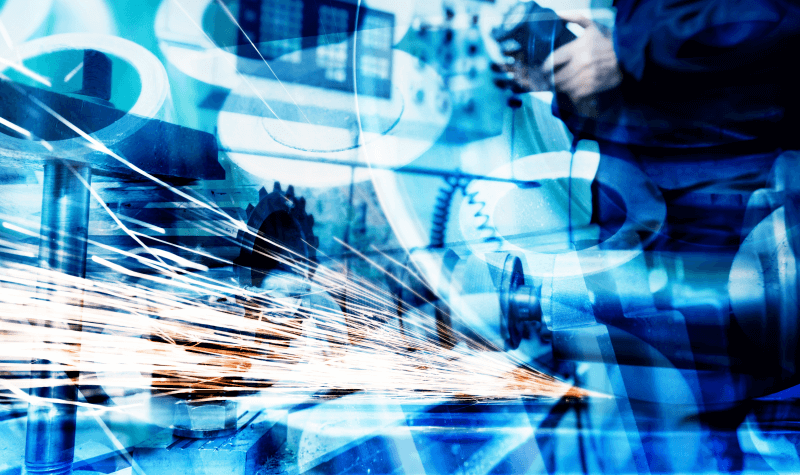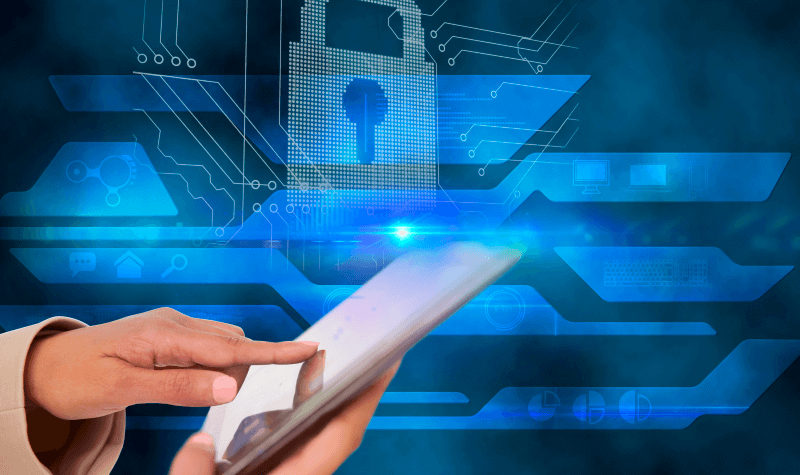SäKRA MEDICINTEKNISKA SYSTEM – DIGITALA SYSTEM OCH VåRDSTöD

-
DURATION7 WEEKS
-
SUBJECT AREASecurity
-
COURSE LEVELSecond Cycle
-
CREDITS2.0 HP
-
INSTITUTIONSUmeå University
Open for the Climate
-
STUDY TYPEDistance
-
START DATE2025-12-03
-
END DATE2026-01-17
COURSE DESCRIPTION
Den här kursen ger dig som arbetar inom medicinteknik de nödvändiga kunskaperna för att utveckla och hantera säkra och hållbara digitala system inom vården. Kursen ger dig kunskap om hur digitala system och vårdstöd ska utformas för att säkerställa att säkerhetskrav för patient och sjukhuspersonal uppfylls. Du lär dig att analysera och sammanställa risker och fördelar med olika typer av medicintekniska system samt värdera teknik utifrån hållbar vård och digitalisering.
Medicinteknisk utrustning omgärdas av en speciell lagstiftning för att säkerställa hög patient- och användarsäkerhet. Dagens medicintekniska produkter är också ofta kopplade till sjukhusens datorjournalsystem, något som gör att de sammantagna systemen i många fall blir svåra att överblicka och kontrollera. För företag och ingenjörer ställer detta sammantaget stora krav på kunskap kring hantering av risker vid utveckling och handhavande av medicintekniska system.
Kursens upplägg
Kursen ges på distans och är lärarledd med föreläsningar. I kursen ingår ett mindre projekt som utförs under handledning på den egna arbetsplatsen. Kursen har 25% studietakt, och arbetstiden du behöver lägga ner motsvarar cirka 7 arbetsdagar.
Mål med kursen
Efter avklarad kurs har du en ökad kunskap om säkerhetsaspekter kopplade till medicinsk teknik. Du har även kunskap om säkerhet, lagar och bestämmelser för medicinteknisk utrustning.
Målgrupp
Kursen riktar sig till medicintekniska ingenjörer eller andra yrkesgrupper verksamma på sjukhuset eller inom sjukvården.
Övrigt
Anmälan är stängd.
Kursen ges som anpassad kompetensutveckling för yrkesverksamma mot en avgift. Läs mer om uppdragsutbildning vid Umeå universitet.
Kontaktperson: Helena.grip@umu.se
Pris: 4693 kr/person exkl moms (betalas av deltagarens arbetsgivare).
courses you may also like

Den här kursen ger dig verktyg och kunskaper för att kunna identifiera och analysera miljörisker. Vi diskuterar möjligheter och behov av att kunna förebygga miljörisker, sannolikheten för att de inträffar och vilka konsekvenser de kan ha för människor, samhället och miljön, både på kort och lång sikt. Kursens mål är att ge dig förståelse för riskanalys och riskhantering. Den ger en teoretisk bakgrund till hur man identifierar, analyserar, bedömer och redovisar miljörisker, från enklare till mer komplexa incidenter. Kursens upplägg Kursen ges på distans, med 25% studietakt. Undervisningen bedrivs i form av obligatoriska zoomföreläsningar, seminarier och projektarbete. Examinationen sker både löpande via aktivt deltagande på föreläsningar, och genom skriftlig och muntlig redovisning av projektarbeten. Mål med kursen Efter avklarad kurs kan du: Identifiera, analysera och värdera risker och riskhanteringssystem inom miljöområdet. Använda och kritiskt utvärdera verktyg som används för att identifiera och bedöma risker. Presentera, diskutera och integrera sina kunskaper, argument och slutsatser inom ämnesområdet för kursen. Målgrupp Kursen passar för personal inom kommun, näringsliv och myndigheter som ska genomföra riskanalyser med fokus på miljöperspektiv för att identifiera, utvärdera och hantera potentiella miljörisker kopplade till verksamheter, projekt eller beslut. Mer information om kursstart och anmälan publiceras inom kort.

Den här kursen ger dig som jobbar med teknik inom det medicintekniska området de kunskaper och färdigheter som krävs för att hantera risker och säkerställa hållbarhet inom medicintekniska system. Medicinteknisk utrustning omgärdas av en speciell lagstiftning för att säkerställa hög patient- och användarsäkerhet. Hållbarhetskraven ökar inom alla branscher, så också inom life science. För företag och ingenjörer ställer detta stora krav på kunskap kring hantering av risker vid utveckling och handhavande av medicintekniska system. Kursen tar upp risker och säkerhetsaspekter rörande medicinteknisk utrustning inom områdena el-, gas- och ickejoniserande strålning. Kursen introducerar medicinteknisk riskhantering samt hur medicinteknisk utrustning och elförsörjning ska utformas för att vara säker och hållbar för både patient och vårdpersonal. Kursens upplägg Kursen ges på distans och är lärarledd. Kursen har 25% studietakt, och arbetstiden du behöver lägga ner motsvarar cirka 7 arbetsdagar. Det ingår ett praktiskt moment som utförs under handledning på den egna arbetsplatsen. Mål med kursen Efter avklarad kurs har du en ökad kunskap om säkerhetsaspekter kopplade till medicinsk teknik. Du har även kunskap om säkerhet, lagar och bestämmelser för medicinteknisk utrustning. Målgrupp Kursen riktar sig till medicintekniska ingenjörer eller andra yrkesgrupper verksamma på sjukhuset eller inom sjukvården. Övrigt Anmälan är stängd. Kursen ges som anpassad kompetensutveckling för yrkesverksamma mot en avgift. Läs mer om uppdragsutbildning vid Umeå universitet. Kontaktperson: Helena.grip@umu.se Pris: 4693 kr/person exkl moms (betalas av deltagarens arbetsgivare).

Vatten är den i särklass vanligaste miljön på jorden och vad som sker i haven påverkar allt liv på jorden. Även om människan inte bor i eller på vatten så nyttjar vi många ekosystemtjänster från vatten som matproduktion, transporter, elförsörjning och rekreation, och därmed påverkar eller förstör ekosystemen. För att kunna fortsätt nyttja resurser från hav och vatten eller utveckla nya värdekedjor krävs en omställning mot resursutnyttjande utan att riskera viktiga ekosystemtjänster. I denna kurs kommer du lära dig mer om akvatiska ekosystem och hur vi nyttjar och påverkar dem, men också hur resursutnyttjandet kan bli hållbart. Innehåll Grundläggande vattencykel & akvatisk ekologi Ekosystemtjänster från hav och vatten Livsmedelsproduktion, fiske & vattenbruk Havs och vattenplanering "Nature-based solutions", nya råvaror och tjänster Klimatförändringar och framtidens vatten och hav Kursens uppläggKursen ges som förinspelade lektioner och läses i egen takt. Kursen innehåller självrättande quiz för att du ska kunna kolla att du har uppnått inlärningsmålen. För att komma vidare i kursen, och kunna skriva ut ett kursintyg när du är färdig, måste du bli godkänd på quizzarna. Du kommer få kunskap omKursen ger grundläggande kunskaper om akvatiska ekosystem, ekosystemtjänster och hot. Kursen ger även kunskaper och färdigheter för att förstå vad som krävs och kan bidra till en blå omställning av resurser i vatten. Efter genomgången kurs kommer du kunna: redogöra för biologiska samband och olika ekosystemtjänster från akvatiska miljöer och dess betydelse för mänskliga samhällen, analysera hot och målkonflikter mellan olika nyttjanden av akvatiska resurser, förstå hur framtida diversifiering av vatten- och havsanvändning kan skapa en hållbar bioekonomi. Vem vänder sig kursen till?I första hand yrkesverksamma eller personer intresserade av att bli verksamma inom blå näringarna, som fiskare, vattenodlare, turistnäring, eller andra företagare inom den blå sektorn. men även vatten- och fiskerättsägare. Kursen är även relevant för tjänstemän i offentlig förvaltning (kommun-myndigheter) och journalister eller intresserad allmänhet.Kursen ges i huvudsak på svenska.

This course has an English version. Look for course with title "Why choose wood for the next high rise building?" KursbeskrivningOlika typer av biomaterial (t.ex. trä) är mycket viktiga i utmaningen att avkarbonisera byggmiljön och minska koldioxidavtrycket för byggnader och infrastruktur genom att ersätta material som stål och cement som har höga koldioxidutsläpp. Samtidigt får vi inte glömma bort att biologisk mångfald, natur och sociala värden i våra skogar är viktigt att behålla samtidigt som skogsbruk bedrivs. I kursens 13 moduler tas skogsbrukets kretslopp upp inklusive avverkningsmetoder, biologisk mångfald, skogsskötsel, logistik, skogens roll i klimatomställningen, kolinlagring, miljöfördelar med att bygga flervåningshus i trä mm. Syftet är att ni som deltar i kursen ska få en gemensam förståelse av det svenska skogsbruket för att ni sen ska kunna fatta välgrundade beslut om materialval vid nästa byggprojekt. KursperiodKursen kommer att vara aktiv under 3 år. InnehållSkogshistoria: Skogens nyttjande i Sverige genom historienSkogsbruksmetoder och skogsskötselSkogsföryngringVirkets egenskaperMätning av skog och virkeSkogsträdsförädling: nutid och framtidSkogens kolbalans och klimatetAffärsmodeller och marknadsutveckling: Fokus flervåningshus med trästommarNaturvård och biologisk mångfald i skogen Kursens uppläggKursen är helt digital med förinspelade föreläsningar. Du kan delta i kursen i din egen takt. Modulerna avslutas med quiz där du kan testa hur mycket du har lärt dig. Du kommer få kunskap omEfter avslutad kurs kommer du att ha lärt dig mer om olika skogliga begrepp, förvärvat kunskap om skogens nyttjande i Sverige genom historien, ökat dina kunskaper om skogsskötsel och hur olika skogsskötselmetoder påverkar den biologiska mångfalden i skogen, lärt dig om skogsbrukets kretslopp – från föryngring till slutavverkning mm. Vem vänder sig kursen till?Den här kursen är tänkt för dig som är yrkesverksam arkiktekt, anställd på kommun som arbetar med stadsplanering och byggande, verksam i bygg- och anläggningsbranschen samt verksam i andra relaterade yrken. Detta är en introduktionskurs och kommer att bidra till en kompetenshöjning i hela byggsektorns ekosystem vilket ökar branschens internationella konkurrenskraft, samtidigt som det ger viktiga förutsättningar för utvecklingen av framtidens hållbara, vackra och inkluderande städer. Eftersom kursen är öppen för alla hoppas vi att fler grupper, exempelvis studenter, doktorander, skogsägare och andra med skogsintresse tar kursen, tar del av inspirerande föreläsningar där vetenskaplig kunskap som producerats huvudsakligen inom SLU presenteras.För mer information kontakta kurskoordinator dimitris.athanassiadis@slu.se

This course explores the role of intelligent sensor systems in driving sustainability and enabling the green transition. Participants will learn the fundamentals of sensor technologies and their integration into intelligent, distributed systems. Emphasis is placed on applications in energy efficiency, environmental monitoring, and sustainable automation. The course covers topics such as basic sensor technologies, embedded systems, distributed computing, low-resource machine learning approaches, and federated learning for privacy-preserving, decentralized model training across sensor nodes. Through a combination of lectures, practical examples, and hands-on project work, participants will gain experience in designing and deploying intelligent sensor systems tailored to real-world sustainability challenges. The students bring their own case study example as the background for a practical project, through which the student is also finally examined. Recommended prerequisites: At least 180 credits including 15 credits programming as well as qualifications corresponding to the course "English 5"/"English A" from the Swedish Upper Secondary School. Course dates: 13 Januari : Introduction10 Februari: Project Idea17 March: Project Presentation Study hours: 80 This course is given by Örebro University.

Digital säkerhet, cybersäkerhet, är en nödvändighet för en fungerande samhällskritisk infrastruktur, såsom elsystem, vattenrening, trafik och sjukvård. Detta blir speciellt tydligt då vi går mot en grön omställning av vårt samhälle, då just samhällskritiska funktioner måste fungera och digitalisering av samhällskritiska funktioner ökar, för att vi ska kunna effektivisera olika verksamheter. Och med det följer att cybersäkra lösningar är ett måste, så att samhället och dess medborgare inte drabbas av digitala intrång. I denna kurs kommer exempel tas upp från olika samhällskritiska funktioner, med fokus på elsystemet. Digitala lösningar kommer att behandlas, samt metoder och modeller för cybersäkra system. Innehåll Samhällskritiska system Sveriges och Nordens elsystem Styrning och övervakning av elsystem Analys av digitala lösningar för elsystem Informationssäkerhetsbegrepp: konfidentialitet, riktighet och tillgänglighet; spårbarhet. Internationell ISO/IEC standardisering Omvärldsanalys Kursens upplägg Allt sker digital på distans, genom Zoom/motsvarande. Föreläsningar – kommer inte att spelas in – varvas med seminarier där olika frågeställningar behandlas i dialog med deltagarna. Undervisningen sker på svenska. Kurstillfällen: Digitalt, sex eftermiddagar á 3 timmar enligt: Tisdag 20 jan 2026, kl. 1315-1600Torsdag 22 jan, kl. 1315-1600 Tisdag 27 jan, kl. 1315-1600Onsdag 28 jan, kl. 1315-1600 Onsdag 4 feb, kl. 1315-1600Torsdag 5 feb, kl. 1315-1600 Kursen tar ca 80h att genomföra. Du kommer få kunskap om Efter kursen ska du ha fått en ökad förståelse för behovet av säkra digitala lösningar samt en bättre medvetenhet (”awareness”) om digitala sårbarheter. Kursen behandlar metoder och verktyg för att stärka en cybersäker miljö, med fokus på samhällskritiska elinfrastrukturer. Vem vänder sig kursen till? Kursen vänder sig till dig som arbetar inom någon samhällskritisk funktion, såsom elbolag, trafikverk, vattenreningsverk eller sjukvårdssystem. Du ska ha en teknisk bakgrund, med kunskap om ditt område där du är verksam.